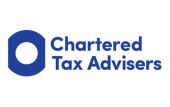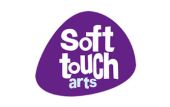
20 questions on employee ownership trusts
Pete Miller and Nick Wright (Jerroms Miller) answer some of the key questions on this valuable regime.
1. Why is employee ownership important?
Employee ownership has been an important part of government policy for a number of years. The Employee Ownership Association’s website (bit.ly/EOAweb) tells us the employee ownership is important because those businesses are more productive and innovative, and more resilient to economic turbulence. Furthermore, the employees are more engaged, more fulfilled and less stressed. So, if employee-owned businesses are, in general, more commercially successful, then encouraging employee ownership must be good for the economy as a whole.
2. What is the tax relief all about?
Following the report by Graham Nuttall in 2012, a tax relief was enacted in FA 2014 whereby, if the relevant conditions were satisfied, the sale of the shares of a trading company or group into an employee ownership trust (EOT) would be free of CGT for the vendors (as long as they are not companies), by deeming the sale to be a no gain, no loss transaction for CGT purposes. Obviously, the opportunity of a tax-free sale is something of interest to most owners of trading companies, so the legislation has clearly had the stated effect of encouraging sales into this form of employee ownership.
3. What is an EOT?
Fundamentally, an EOT is where the beneficiaries of the trust are the employees from time to time of the trading company or trading group which it owns. The tax legislation imposes certain conditions about the way in which trust property can be applied to the benefit of the beneficiaries, for example by excluding from benefit the vendor shareholders and persons connected with them.
4. Who are the beneficiaries?
As noted above, the beneficiaries will be the employees from time to time of the trading company or trading group that is owned by the trust. Under specific circumstances – when the trust sells the shares of the company or if the company or group ceases to trade – the beneficiaries will also include anyone who was an employee in the two years before that event occurred (TCGA 1992 s 236J(4)). This can create some interesting practical difficulties!
The tax rules also allow the trust to pay benefits to surviving spouses, civil partners or dependants of deceased employees for up to a year after the death of the employee.
Generally, however, the vendor shareholders, and persons connected to them, must be excluded from benefit, if the trust is to qualify as an EOT for the purposes of the relief from CGT.
Finally, of course, there has to be a default beneficiary, so the trust deed is also allowed to apply trust property for the benefit of a charity, which would usually only be in point if there are no employees to benefit.
5. What are the conditions for the tax relief?
There are four requirements for relief: the trading requirement, the all employee benefit requirement, the controlling interest requirement and the limited participation requirement. Taking each in turn:
- The trading requirement is simply that the company or group owned by the EOT must be a trading company or group, as defined (TCGA 1992 s 236I). Generally, this means a company or group that does not have any substantial non-trading activity. This test should be familiar to most readers.
- The all-employee benefit requirement dictates who the beneficiaries should be and the way in which benefits can be varied amongst employees based on length of service, hours worked and level of remuneration (TCGA 1992 ss 236J, 236K).
- The controlling interest requirement means that the trust must hold at least 51% of the company’s ordinary share capital, as well as having rights to more than half of the profits available for distribution to equity holders and of the assets available for distribution to equity holders on a winding up. Again, this is a commonly used test of ownership (TCGA 1992 s 236M).
- The limited participation requirement is effectively the requirement that the company has an appropriate number of employees in comparison to the shareholders. For the 12 months up to the point of sale into an EOT, the ratio between participators (and persons connected with them) and employees of the company must be less than 2:5, and this ratio must be maintained at all times after the sale into the EOT, as well. The ratio will often be different after the sale, especially if the vendors sell all of their shares in the company, as there will then be no participators in the numerator of the fraction (TCGA 1992 s 236N).
6. How long do the conditions have to be satisfied?
The conditions must be satisfied at the point of disposal (and for the 12 months before as far as the limited participation requirement is concerned) and then forever afterwards, if the benefits are to be preserved.
If any of the conditions ceases to be satisfied, or if the trustees act in a way that contravenes the all-employee benefit requirement (a ‘disqualifying event’) in the tax year following that in which the sale to the EOTs occurred, then the tax relief is no longer available to the vendors and it is rescinded if it has already been granted (TCGA 1992 s 236O).
Once that tax year has completed, the vendors are off the hook but, if there is a disqualifying event at any future time, the trustees are treated as having sold the shares at market value and immediately reacquired them, so they will be subject to a large CGT charge (bearing in mind that the original disposal to the EOT was at no gain and no loss, so they will have inherited the original, usually low, base cost from the vendors) (TCGA 1992 s 236P). This is obviously an undesirable situation.
The only time when a disqualifying event is generally acceptable is if the trustees are persuaded that they should sell the shares of the company, in which case the deemed disposal is an actual disposal, so funds will be available to pay any CGT.
7. What price should I sell at?
There is a tension between the buyer and the seller, as in any transaction. In this case, however, there are additional factors on both sides. The buyers, being the trustees, have a fiduciary duty to the beneficiaries of the trust, meaning that they must ensure that they do not overpay for the shares that they acquire. On this basis, any valuation carried out to support the transaction price is likely to be of value to the trustees as well as to the vendors.
Generally speaking, the vendors of a company would expect to obtain market value for selling their shares. The tax legislation, however, permits the vendors to sell at below market value. While this might seem counterintuitive, a moment’s thought will show that, if a company worth £2m is sold to an EOT for, say, £1.8m, the vendors will have £1.8m net of tax. Conversely, if they had sold to a third party for £2m, they would have paid around £300,000 of CGT, so the net of tax receipt would only be £1.7m. So, by suspending the market value rule that would normally apply if the sale were at a deliberate undervalue, Parliament is encouraging the vendors to share the tax benefit of the CGT relief with the trustees.
8. How can the trust afford to buy the shares?
Much like a management buyout, the purchase is ultimately funded from the profits of the company or group, itself. Thus, the vendor shareholders are willing for their sale proceeds to be paid over a number of years. The issue here, however, is that, since the company is owned by a trust, if it were to pay dividends to the trustees, these would be chargeable to income tax, which means that repayment of the debt to the vendor shareholders would take substantially longer than in a management buy-out, where the dividends to the purchaser company would be tax-free.
In the case of a sale to an EOT, HMRC will usually accept that, so long as payments by the company to the trustees are ‘contributions’ to the trust, and not distributions, and are not seen as payments as of right due to the trustees as shareholders, then those contributions will not be treated as taxable dividends.
HMRC is generally willing to give a pre-transaction clearance on this point under the non-statutory clearance facility.
Many of us think it would be much better to have a specific tax exemption for dividends to the trustees, where these are used to pay off the purchase price of the company (along with the costs of the acquisition, the stamp duty and a reasonable rate of interest), and the CIOT has made representations to HMRC and HM Treasury about having a statutory exemption to regularise the position.
9. Can anyone else hold shares in the company?
It is not necessary for the shareholders to sell all their shares into the trust, as long as the trust has the required controlling shareholding. It is not uncommon for vendors to retain up to 25% of the ordinary shares of the company, on the basis that they will then get to share in any upside on a subsequent sale by the trustees and, in the interim, they will continue to qualify for dividends.
Even in cases where the vendors sell all of their shares into a company, the company might choose to issue shares, either directly or via share options, to key employees or to the workforce generally. Obviously, the trustees must retain the controlling shareholding to avoid triggering a disqualifying event, but this does mean that, for example, EMI options could be used to incentivise core members of the management team who might otherwise feel they have lost out by not being permitted to lead a management buyout.
10. Who runs the company after the transaction?
Before a sale into an EOT, a company will typically be run by its shareholder directors, perhaps assisted by a management team. There is no reason why the same group of people should not continue running the company immediately after the sale into an EOT. Of course, the sale of the shares is usually part of the retirement plan for the vendor shareholders, so we would normally expect them to be passing on their knowledge and experience to the management team and retiring within a few years of the sale.
Obviously, if the directors of the company are also trustees of the trust, there is a potential conflict of interest (see next question), so we usually suggest that the vendor shareholders should not be the only directors. As with trustees (see below), we suggest that there should also be employee representative(s) and independent directors on the board of an EOT-owned company.
The other commercial aspect to consider is whether the management team might not, themselves, prefer to have taken over the company, perhaps through a management buyout. It’s important to keep the management team on the side through these transactions and, as already noted, it is possible for them to acquire shares in the company following the disposal.
11. How should the trust be structured?
The simplest structure is for the trustee to be a company limited by guarantee (TrustCo), which provides a degree of protection to the trustees who will actually be directors of the trust company, rather than formal trustees. This may be a a stand-alone company, but it is also common for this company to be incorporated as a subsidiary of the trading company as this provides a degree of circular ownership which itself provides a further element of protection.
This structure means that the company will be unable to grant EMI options. This is because TrustCo is both a company limited by guarantee and a subsidiary of TradeCo, which will cause the qualifying subsidiary condition for EMI options to be failed as TradeCo does not hold at least 51% of the share capital of TrustCo (because TrustCo has no share capital!).
So if the company may want to issue EMI options, either TrustCo should be a stand-alone company or it should be a subsidiary limited by share capital, instead.
12. Who are the trustees of the trust?
The tax legislation does not prescribe who the trustees should be. It’s not uncommon for the vendor shareholders to continue being both directors of the company and trustees of the trust. This does lead to the potential for conflicts of interest, which is a concern from a governance perspective, as a matter of general law, but the tax legislation is silent on these issues.
In our view, the best model is one where, say, one of the vendor shareholders is a trustee, alongside an employee representative and an independent trustee. This allows for continuity, particularly given that the sale to the trust is likely to be part of the vendors’ retirement planning, so they are unlikely to want to be trustees in the long term.
13. What are the benefits to the employees?
The direct benefit to the employees is that the company can pay them an annual bonus of up to £3,600 free of income tax (ITEPA 2003 s 312A), although it still carries national insurance contributions. To be frank, many of us feel that this is relatively trivial, considering that the benefits to the vendor shareholders can be huge (at least one transaction we carried out involved the sale of the majority of the company’s share capital into an EOT for a sum in excess of £100m).
While the company is owned by a trust, there is no particular benefit to the employees in having that trust pay them any surplus funds, as any payments to the employees out of the trust will be treated as earnings. The only way which the trustees will have surplus funds to distribute, in any case, is likely to be because they have received dividends from the company, meaning the funds end up being taxed twice: once on the dividend to the trustees, and again when the residue is distributed to the employees as earnings. So, the effective tax rates on dividends paid by the company to the trustees and thence to the employees could be 70% or more!
It is for this reason that we do not recommend that the company pay dividends to the EOT. Indeed, it is common in these cases for the trustees to waive their rights dividends in these cases. Instead, we suggest that the company’s profits are retained and used to invest further in the business, including paying more to employees. This way, they benefit indirectly from ownership by the trust, as there are no shareholders demanding profits.
14. Can the key management team be incentivised under employee ownership?
The income tax free bonus of up to £3,600 per year may be little incentive for the more highly paid employees.
Whilst there is the equality requirement within the EOT provisions, both for distributions from the trustees and for tax-free bonuses from the company, there are no rules specifying the level of remuneration each individual employee can receive. So, as already highlighted, with no shareholders requiring a dividend there is likely to be more cash to increase the key managers’ salaries.
However, an EOT may still disincentivise the key managers – who will be relied upon to deliver the deferred consideration – if they were expecting the opportunity to partake in equity ownership. For this reason, share option schemes, in particular employment management incentives EMIs), are commonly set up alongside the sale to the EOT. The vendors can sell a controlling interest whilst the key managers can be incentivised to deliver the profits to pay them off and, in return, they will receive shares once they have achieved this.
Furthermore, the fact EMI options must be exercised within ten years provides a deadline for which the company must repay the deferred consideration (see HMRC’s Employee Tax Advantaged Share Scheme User Manual at ETASSUM54020).
15. Is there any downside to offering share options to key managers?
Whilst share options can be a fantastic benefit of the key managers and also give comfort to the vendors that the deferred consideration will be paid off in a reasonable timeframe, the trustees must be aware of how these will impact the EOT conditions.
The main concern is the limited participation condition, which requires that the number of 5% participators compared to the total number of employees does not exceed 2/5. Whilst, in the case of EMI options, this should not present a problem until the options are exercised (perhaps with the exception of ‘exit only’ options) the trustees should be aware that the exercise of the options will immediately affect the limited participation fraction.
The option holders should also be aware that, once they exercise the options and receive shares, they may be excluded from benefits as participators if they hold more than 5% of the company’s ordinary share capital (or 5% of any class of capital, so special share classes in these cases can be a bad idea). This means that they will not be able to benefit from a share of the EOT sale proceeds, if the company were to be sold. However, the intention would be that the benefits of their direct shareholdings should outweigh this.
16. What happens if the trustees sell the company?
The intention behind the legislation is to encourage long-term ownership of companies by EOTs. However, from time to time, it is inevitable that offers will be made to the trustees to buy the company. The trustees are required, of course, to consider the requirements of the beneficiaries, first and foremost. This is an area where a conflict of interest might arise, because the trustees might also hold shares themselves, particularly if they are the vendor shareholders and have retained a shareholding (as highlighted above). So it is important that the decision to sell is made bearing in mind the needs of the employees of the company and not the trustees’ own needs as a separate group of shareholders.
There are obviously a variety of issues that the trustees will need to consider, but primarily we suggest that they need to be comfortable that, following the payment of the CGT on the transaction and any outstanding funds still due to the original vendor shareholders, there will be sufficient remaining to distribute to the beneficiaries to make the transaction worthwhile. Clearly, if there would be no surplus available for beneficiaries, then no matter how generous the offer looks, it seems unlikely that it would be appropriate for the trustees to accept it.
17. What happens when they sell it?
As already noted, anything that is distributed to the beneficiaries will, under current law, be treated as earnings. Once again, therefore, we see a form of double taxation, with the trustees paying CGT on the proceeds and the net amount distributed to beneficiaries then suffering income tax and national insurance contributions as earnings. Apart from the double taxation element, we also feel that treating the surplus as earnings effectively belies the concept of employee ownership, because ownership implies that, where you sell the thing you own, the funds received would be treated as a capital gain. We think that EOTs would be better if the legislation provided that the trustees pay CGT on the disposal of the shares and the net amount distributed to beneficiaries is treated as a capital gain on which the CGT has already been paid.
Readers may be aware that the government has promised a consultation on the EOT legislation later this year, and this is one of the suggestions we are likely to put forward in terms of making the prospect of employee ownership more attractive to the employees, themselves.
Of course, another argument is that treating the net proceeds as earnings reduces the potential benefits to the employees. This might then reduce the likelihood of the trustees agreeing to a sale, if the net of tax receipts to the employees are not sufficient to make the sale worthwhile, meaning that the company would remain employee owned, coinciding with government policy.
18. How easy is it to set up?
In concept, like much of tax legislation, it should be fairly easy to setup an EOT and sell shares into it. In practice, of course, UK tax (and other) legislation is not only complex and hard to read in its own right, it is also often surrounded by detailed and frequently abstruse anti-avoidance rules, leaving a lot of elephant traps for the parties involved. And there are at least three parties in all of these scenarios; the vendor shareholders, the directors of the company and the trustees. All of these groups of people, even if they wholly or partly comprise the same individuals, need advice specific to their particular circumstances.
It is vital, for example, that advisers check both the transaction documents and the trust deed, to ensure everything complies with the tax rules for the relief from CGT.
Furthermore, there are at least two, and some people recommend three, clearances required from HMRC in advance of implementing the transaction. One of these is a statutory clearance that the transactions in securities rules will not apply to the disposal; another is the clearance in respect of contributions by the company to the trust, referred to above; and many people also recommend a clearance that there are no benefits to participators, under the rules introduced by FA 2014 to supplement the loan to participator rules.
And then there are other administrative issues, such as Companies House filings, registration of the trust, and so on.
Our recommendation is to work with advisers, accountants and lawyers with experience with EOTs, to make sure nothing falls through the cracks. We also believe it is important to ensure that the parties to the transactions are given a detailed tax report covering all aspects of the legislation as they relate to the transaction that was carried out.
19. Is the tax relief encouraging employee ownership?
Obviously, if you make a transaction tax free, people will look at it closely, so anyone thinking about the succession to their trading business is likely to look at the rules for sale to an EOT, so long as they actually have a reasonable number of employees. In that sense, the encouragement of the tax system is clearly working, although it will come as no surprise that we also get enquiries from company owners where we do not feel that a sale to an EOT would be appropriate, regardless of the attraction of the relief. In those cases, it is important to have a commercial conversation, because a tax-free sale is of no use whatsoever if ownership by an EOT will not work commercially for the company. If the company is not successful under employee ownership, the vendor shareholders won’t get paid out, which means they will be worse off than if they had simply sold to someone else and been fully paid, subject to CGT. We find it interesting how people’s views of the tax relief change when we point out that, for example, selling to an EOT is not a magic bullet to allow them to retire immediately, as they will have to continue running the company until they have nurtured the next generation of managers. Or when it becomes obvious to them that the employees of the company are not interested in employee ownership – or at least not this form of employee ownership – so they will be demotivated by such a transaction, which again would have an adverse commercial impact on the company.
20. Is the tax relief being abused?
We have no doubt that there are companies being sold to EOTs that should not be, where the sale is simply to take advantage of the favourable tax treatment. This is arguably not abusive, because Parliament has set up the criteria that these companies and trusts have to satisfy and, if all those criteria are satisfied, then those people are simply complying with the will of Parliament!
We are aware, however, of scenarios where sales of some or all of the shares of a company into an EOT is followed, a couple of years later, by a third-party sale by the trustees, in such a way that some might suggest that the only purpose of that sequence of transactions was for the vendors to avoid CGT on their proceeds. Arguably, once again, this is not abusive, because Parliament does not set any minimum period of ownership by the trust (apart from the tax year following that in which the disposal occurs). But there might be arguments for extending the period during which the tax relief remains at risk, in whole or in part.
We are also aware that some advisers suggest the use of offshore trustees. In some cases, this is simply so that the advisers can charge large fees via their offshore trustee companies. But offshore trustees are also outside the scope of UK CGT, so that, were there to be a disqualifying event that would affect UK resident trustees, the use of offshore trustees sidesteps this issue. Again, it’s hard to say this is abusive when the legislation does not contain any prohibition of the use of offshore trustees.
Obviously, as advisers, we would like our clients to be able to legitimately minimise the tax that they have to pay. On the other hand, as responsible members of the tax community, we have to recognise that tax reliefs do get abused from time to time, and it may be that part of the purpose of the consultation on EOTs later in the year will be to consider whether some appropriate and measured anti-avoidance rules should be put in place.

Pete Miller
This email address is being protected from spambots. You need JavaScript enabled to view it.
07984 353426
Reference: Miller’s tales: EOTs – policy and practice (taxjournal.com)








